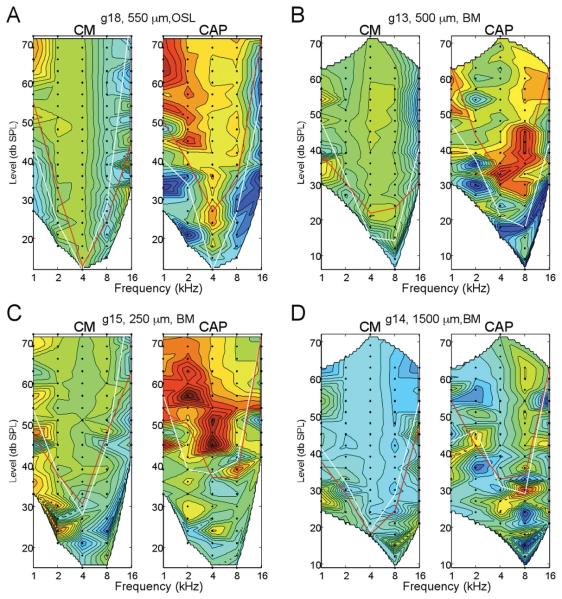Figure 4.
Four examples where the CAP showed a loss of response where the CM did not. For each case, depth and site of anatomical damage is indicated. In each case the loss of response, indicated by warmer colors, in the CAP was significant while that of the CM was not. Note that in two cases (A and C), the loss of response occurred at low frequencies, while in two cases (B and D) it was primarily at high frequencies. This variability does not appear to be due to the site of damage, as changes in the same frequency ranges have been seen when the damage was to the BM or the OSL. The reverse scenario, on where the CM is reduced prior to the CAP, has not been seen in any animal tested so far. Thus, a slight decrease in the CAP response appears to be the most sensitive marker of cochlear damage under these conditions (color scale of the CM is from 25, dark blue, to 160 dB, red, re 1 μV/Hz, and for the CM is from 25 to 60 dB, re 1 μV).

